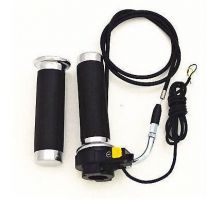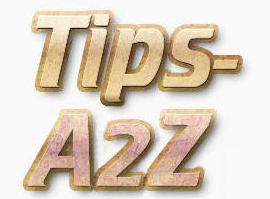Main > Sport > Cycling > How to ride
Be relaxed: The more relaxed you are on your bike, the less energy you will burn and the more energy you will have.
thesource (378)
|
|
|
Main > Sport > Cycling > How to ride > Adverse conditions
"Black" ice: Slow down in cold, wet conditions, where frost or snow is apparent on the verge.
General tips:
— Bridges, overpasses, shadowed areas of the road, and places near water like lakes or springs, may have iced surfaces in winter.
— Studded tyres gain traction in ice, and can be made easily by attaching pop-rivets or short screws, equidistant around the tyre. They shouldn't be placed in the walls of the tyre or the centre where the rubber hits the road. Prevent tubes puncturing by covering the screw-heads with duct tape.
— Slick or normal tread tyres will slide as in mud.
— Do not create any sudden movements, like braking hard, or steering insensitively.
— On starting to slide, turn the front wheel into the slide to regain control over the forward trajectory of the bicycle.
kellyjones00 (593)
|
|
|
Main > Sport > Cycling > How to ride > Adverse conditions
Strong headwinds: Treat it as hill climbing.
Don't become stressed at the wind, as this will tense muscles, increase heart-rate, and burn precious energy.
Streamline your profile, including luggage, for less air resistance.
Wear close-fitting clothing.
Take shoes out of cleats in case of falling over.
Keep luggage strapped down and weighted low to help balance.
Wear close-fitting sunglasses to prevent eyes tearing up.
If wind is cold, cover the face with balaclava. Lip balm may also help prevent chapped lips.
Get off and walk, or find shelter, if things get too tough.
kellyjones00 (593)
|
|
|
Main > Sport > Cycling > How to ride > Adverse conditions
Heavy rain: Use tested waterproof gear, especially on long rides. Not only a raincoat with a hood that fits under your helmet, but also waterproof pants, waterproof full-finger gloves, and waterproof shoe covers.
kellyjones00 (593)
|
|
|
Main > Sport > Cycling > How to ride > Adverse conditions
Cleats and cold feet: Cycling shoes have a metal plate in the sole, which can cause the feet to be cold in wet weather. A couple of solutions are:
- A thin pad under the shoe-liner and over this metal plate (or on top of the thin pad already there)
- Wear two pairs of socks.
- Plastic bags worn over socks, and tucked well under the top elastic band, with a rubber band holding them in place and sealing off any entry to water, may also help keep feet dry and relatively comfortable.
kellyjones00 (593)
|
|
|
Main > Sport > Cycling > How to ride > Adverse conditions
Very hot, dry air: It is unwise to cycle in very hot conditions. It is possible to get sun-stroke and/or blackout. If one becomes dizzy, has a variable pulse, and feels strangely tired, seek shade immediately and cool down. Rehydrate and ingest some salt.
If there are no trees or shelters:
If you have a tent, erect it, and get inside. Keep the air-vents open so long as the wind entering is not hot.
Or, turn the bicycle upside-down, and drape clothing over it to create shelter from the sun. Lie in the shade.
Lay a thin damp sheet over the body and face.
N.B. Don't lie on the side of the road looking like an accident victim, unless you wish people to stop.
kellyjones00 (593)
|
|
|
Main > Sport > Cycling > How to ride
Spin: Spinning is cycling at a fast "cadence" (revolutions of the crank per minute). Touring cyclists general spin at 80rpm, while professional road cyclists spin at 100rpm or more. It is more efficient to spin instead of grinding at low cadence, because:
- less force is applied to the pedals per revolution, putting less pressure on joints and muscles;
- it predominantly uses "slow twitch" muscles, which have greater endurance capacity;
- grinding at low cadence to produce a more powerful stroke uses more energy and produces blood lactate which makes the legs feel heavy.
It is a good idea to practice gearing-down in undulating terrain. The aim is to maintain as much momentum as possible, at the same cadence.
For example, a cycletourist on a 24-speed bicycle may gear-down quickly with this combination:
1. Before climbing: largest front ring and 5th gear on back
2. Starting to climb: middle front ring and same rear gear
3. Slowing down: smallest front ring and same rear
4. Actual climbing: same front ring, and 4th rear gear, then 3rd, then 2nd, and 1st if necessary.
kellyjones00 (593)
|
|
|
Main > Sport > Cycling > Road
For tougher slick tyres, tape a long strip of rubber from an old tube to the inside of the tyre.
kellyjones00 (593)
|
|
|
Main > Sport > Cycling > Transporting goods
Choose clip-on panniers instead of strap-on ones. It is just easier.
kellyjones00 (593)
|
|
|
Main > Sport > Cycling > Mechanics
Fixing a flat tube while exposed to heavy rain and without shelter: just switch the tube with a new one. Don't try to repair it.
kellyjones00 (593)
|
|
|
Main > Sport > Cycling > Mechanics
After cutting the cable housing to fit, slip a sturdy metal cap over the cut end. This will stop it being compressed under pressure when sitting in the braze-ons, and possibly crimping shut onto the shifting cable.
kellyjones00 (593)
|
|
|
Main > Sport > Cycling > How to ride > Cycling in traffic
Night riding: It is especially important to use bright, powered lights on the rear and front of the bicycle when the surrounding environment has no lighting. Hard "cat-eye" reflectors are superior to fabric or tape reflectors. Attach them to pedals, and to the helmet, pannier racks, backpack, forks, and handlebars. The more brightly lit, the better.
kellyjones00 (593)
|
|
|
Main > Sport > Cycling > Road
If you have a mountain bike, but ride it almost exclusively on the road then change the tires to thinner road tires. Road tires have less friction and higher pressure. Riding will be about 20% easier.
thesource (378)
|
|
|
Main > Sport > Cycling > Mountain-biking
The best type of gears for mountain biking are arguably the handlebar twist type. These have the following advantages:
- Keep your hands fully on the handlebars.
- Change through multiple gears very rapidly.
- Resist damage if you crash.
However, more casual riders often prefer the thumb-shift/trigger type, for ease of shifting.
thesource (378)

Click to enlarge
|
|
|
